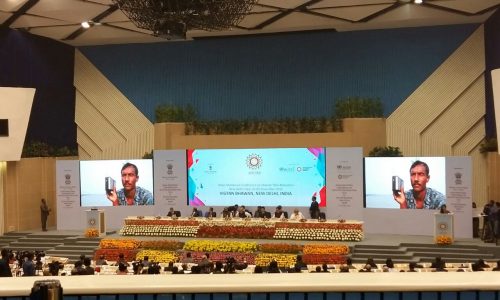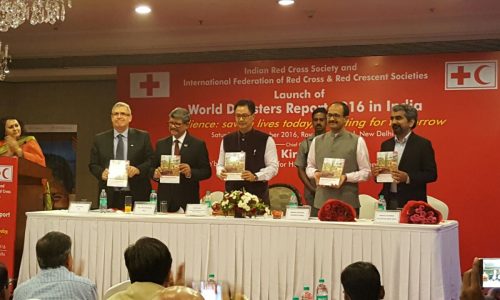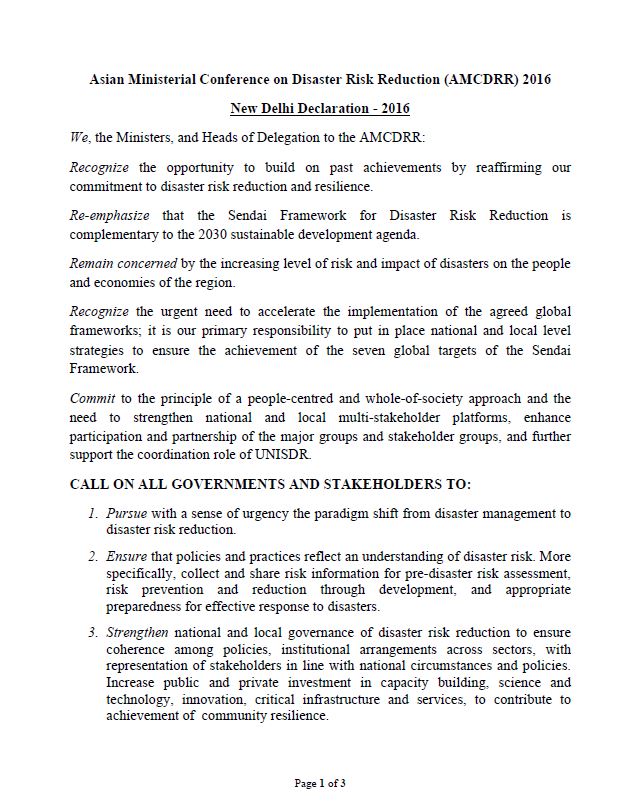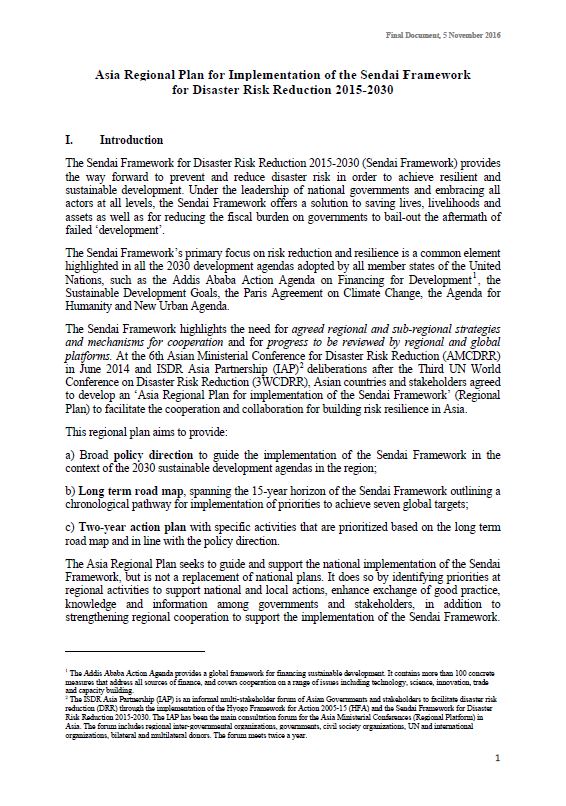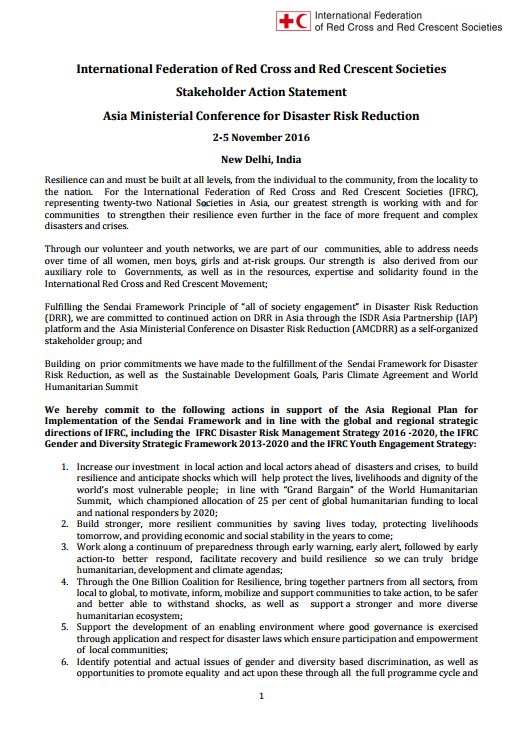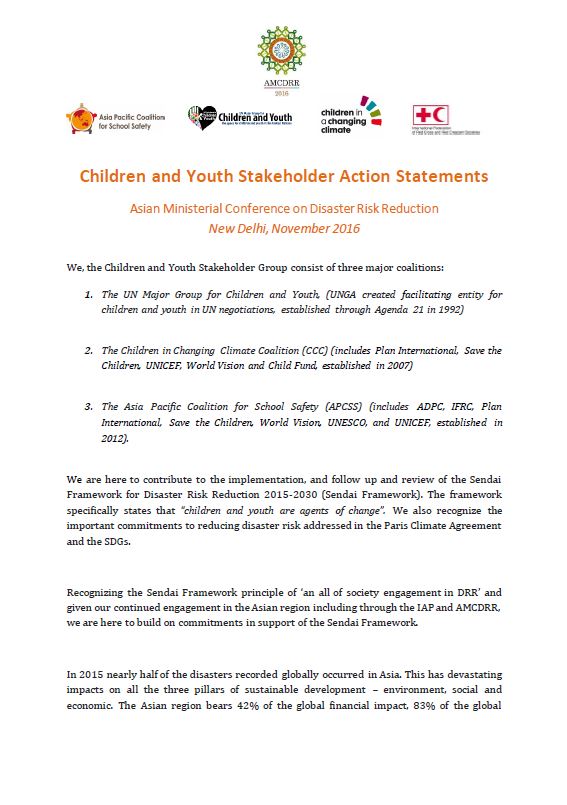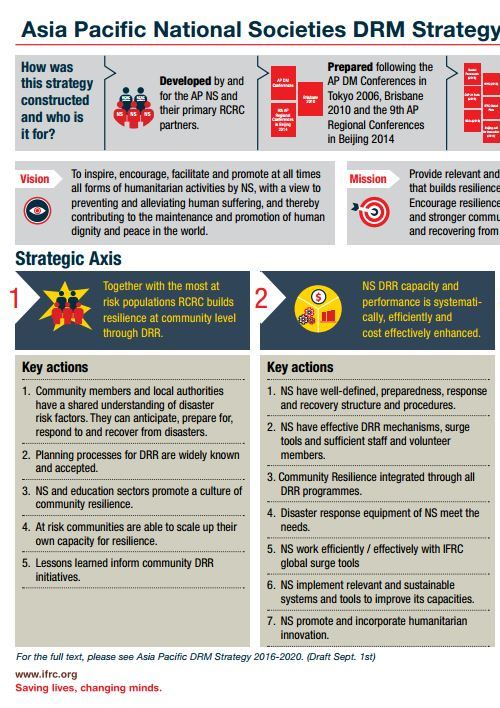Risks and vulnerabilities go beyond national boundaries. Regional platforms provide an opportunity to address trans-boundary issues around disaster prevention and preparedness by providing leadership, by addressing disaster risks and building the resilience of communities and nations in the region.
In Asia, the regional platform mainly consists of the Asian Ministerial Conferences on Disaster Risk Reduction (AMCDRR) and the ISDR Asia Partnership (IAP) forum as its mechanism for consultation and technical support. Established in 2005, the AMCDRR is a biennial conference jointly organized by different Asian countries and the United Nations Office for Disaster Risk Reduction (UNISDR).
The AMCDRR serves as a forum for stakeholders to take a shared responsibility and make actionable commitments towards implementation of DRR in the Asia region through the exchange of experiences on successful practices and innovative approaches in reducing and managing disaster risk.
The AMCDRR is an established regional mechanism for disaster risk reduction. Its success is largely due to the joint leadership of hosting governments and their partnership with UNISDR who provided the technical support. As a result, the AMCDRR has been instrumental in increasing political commitment and strengthening the disaster risk reduction agenda at all levels.
This AMCDRR is the first one held after the advent of the Sendai Framework, hosted by the Government of India in November 2016.
Last week, representatives from the International Red Cross and Red Crescent Movement, including thirteen National Societies, joined senior-level government delegations and experts at AMCDRR to exchange experience and chart the way forward to build resilience and reduce disaster risk across the Asia region. The Movement called for greater investment in local actors and new partnerships to reduce disaster risk and increase community resilience.
The objectives of the AMCDRR 2016 conference are as follows:
- Transforming the commitment of governments and stakeholders made in Sendai during the WCDRR into national and local action.
- Setting the direction to accelerate regional implementation and monitoring of the Sendai Framework
Outcome documents:
- New Delhi Declaration: A political declaration consolidating the political commitment of governments towards preventing and reducing risk as well as strengthening resilience by accelerating implementation and monitoring of the Sendai Framework in the region.
- Asia Regional Plan for Implementation of the Sendai Framework – a plan endorsed by the countries for the Asian region.
- Stakeholder action statements – voluntary statements of action of stakeholder groups towards a ‘shared responsibility’ approach in implementation of the Sendai Framework. See IFRC Stakeholder action statement and Children and Youth Stakeholder Action Statements (IFRC is part of the Stakeholder Group)
Relevant document:
For more information, please see this press release by IFRC.
Outcome documents
Related documents
![]()


